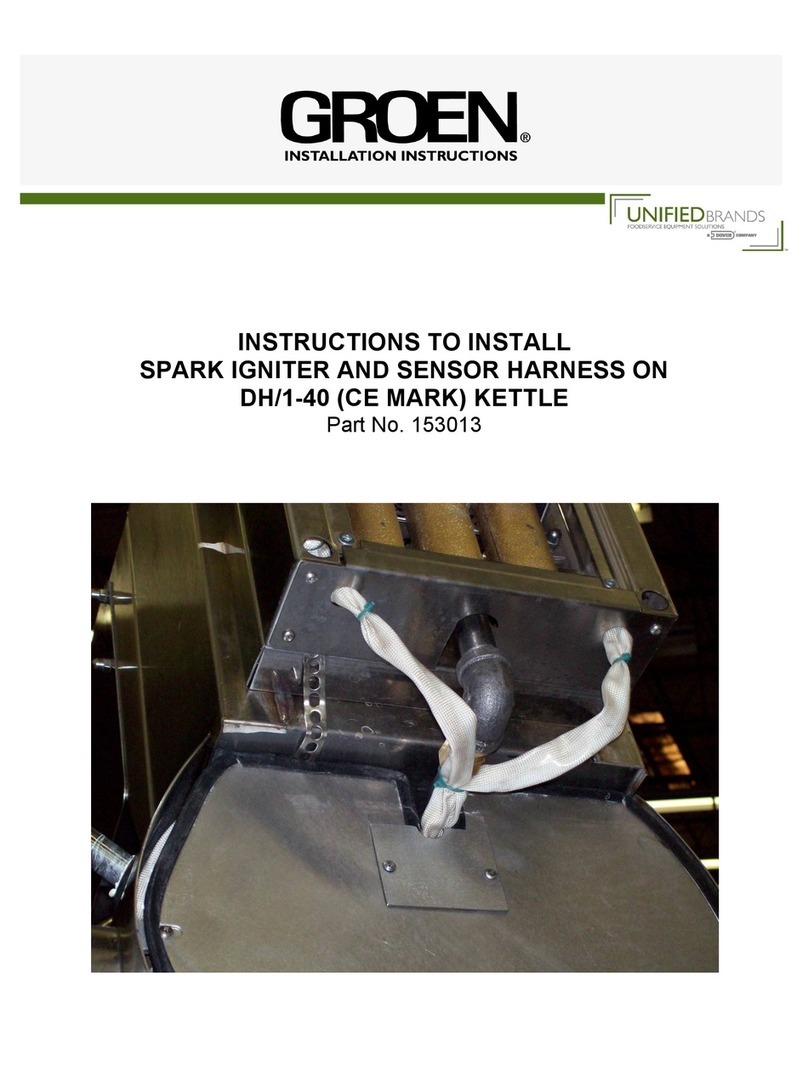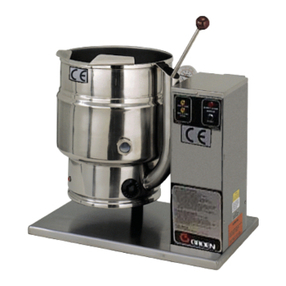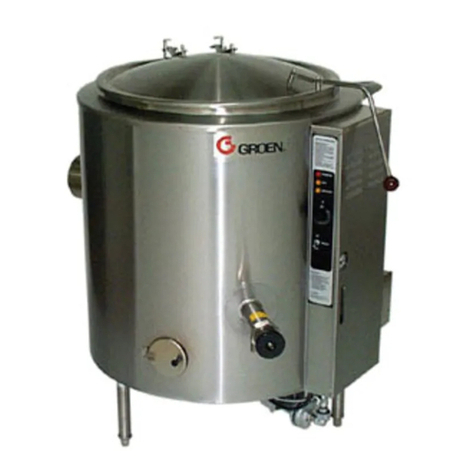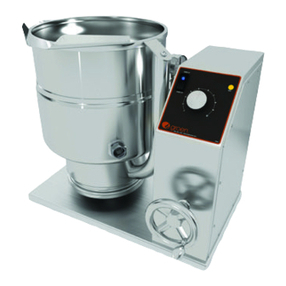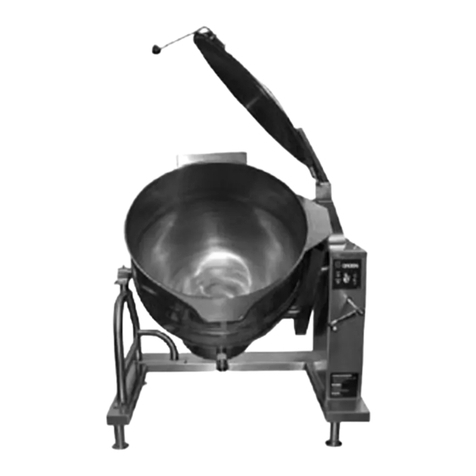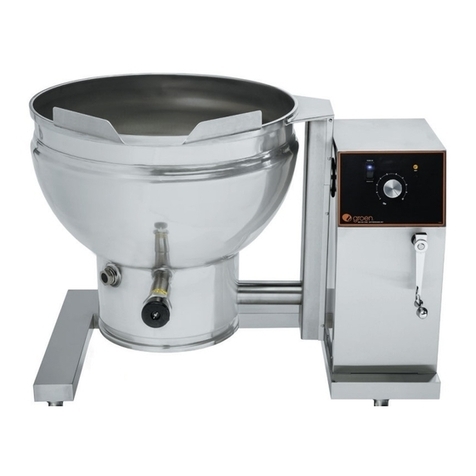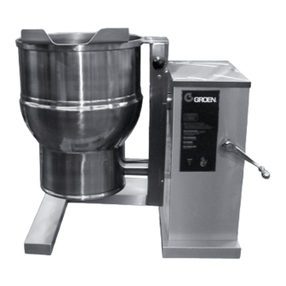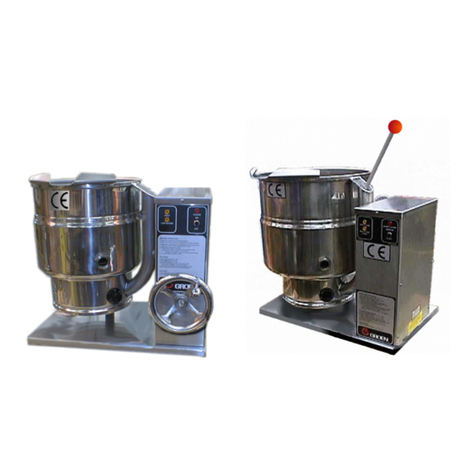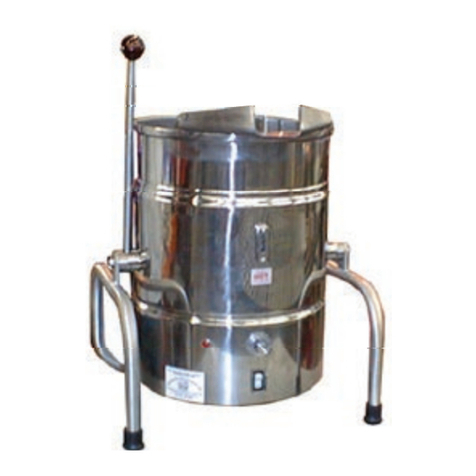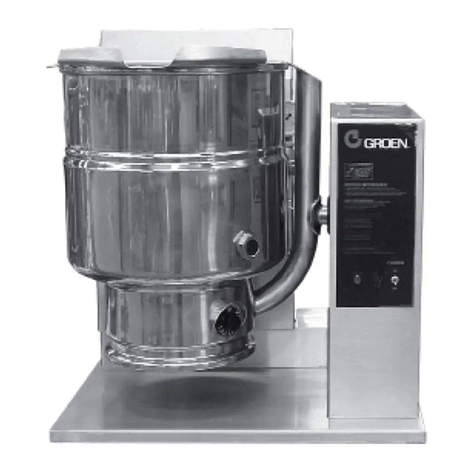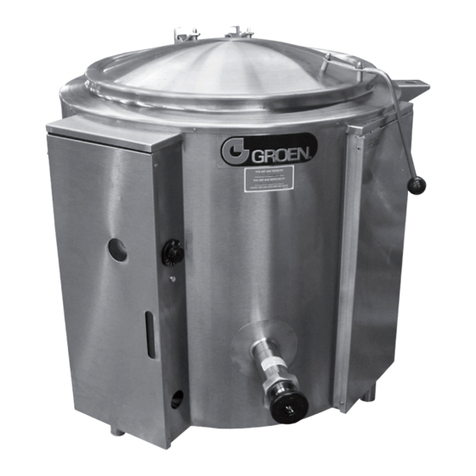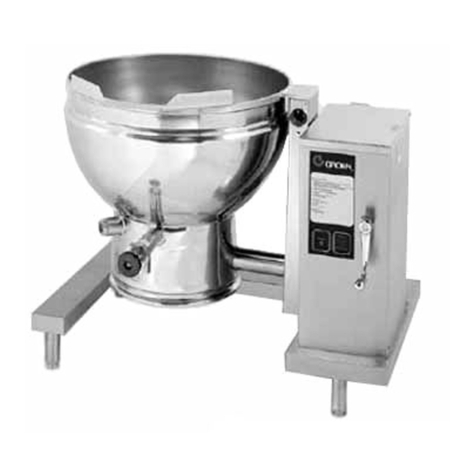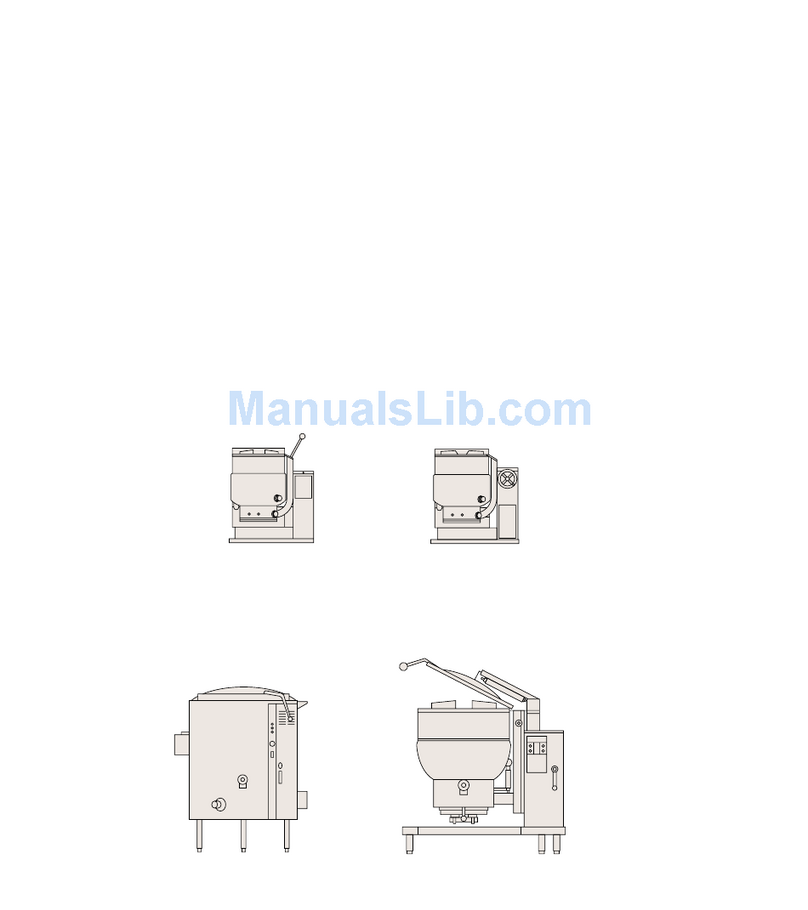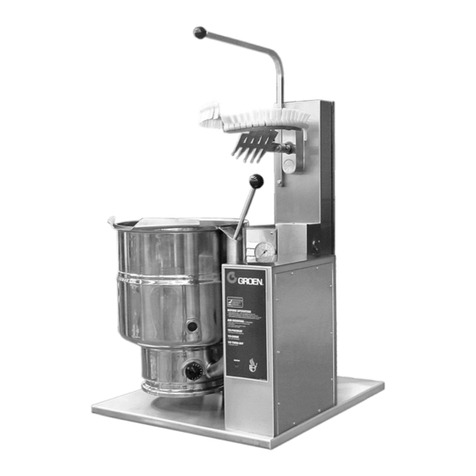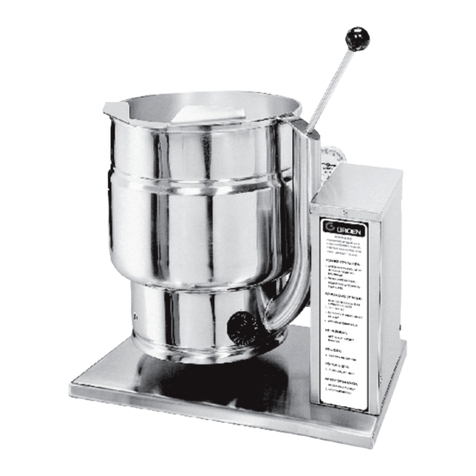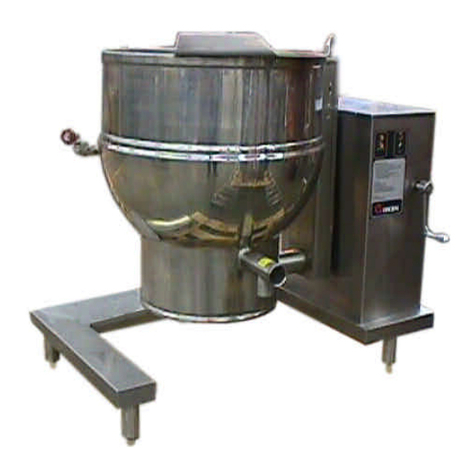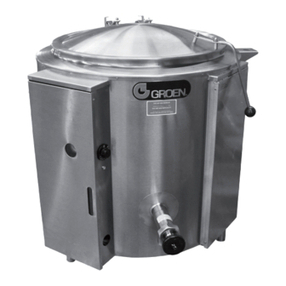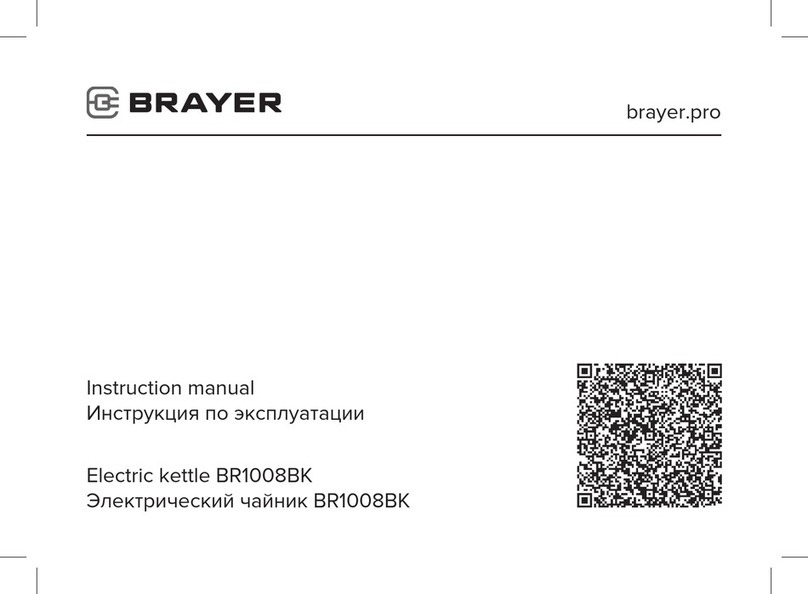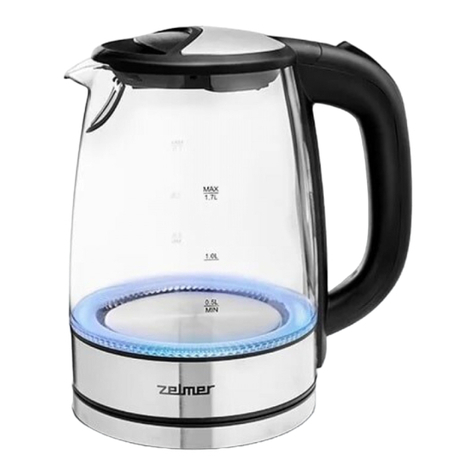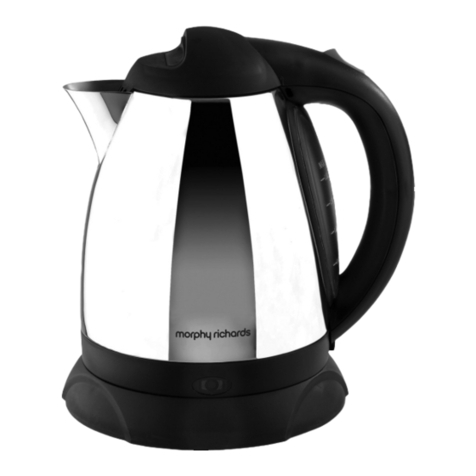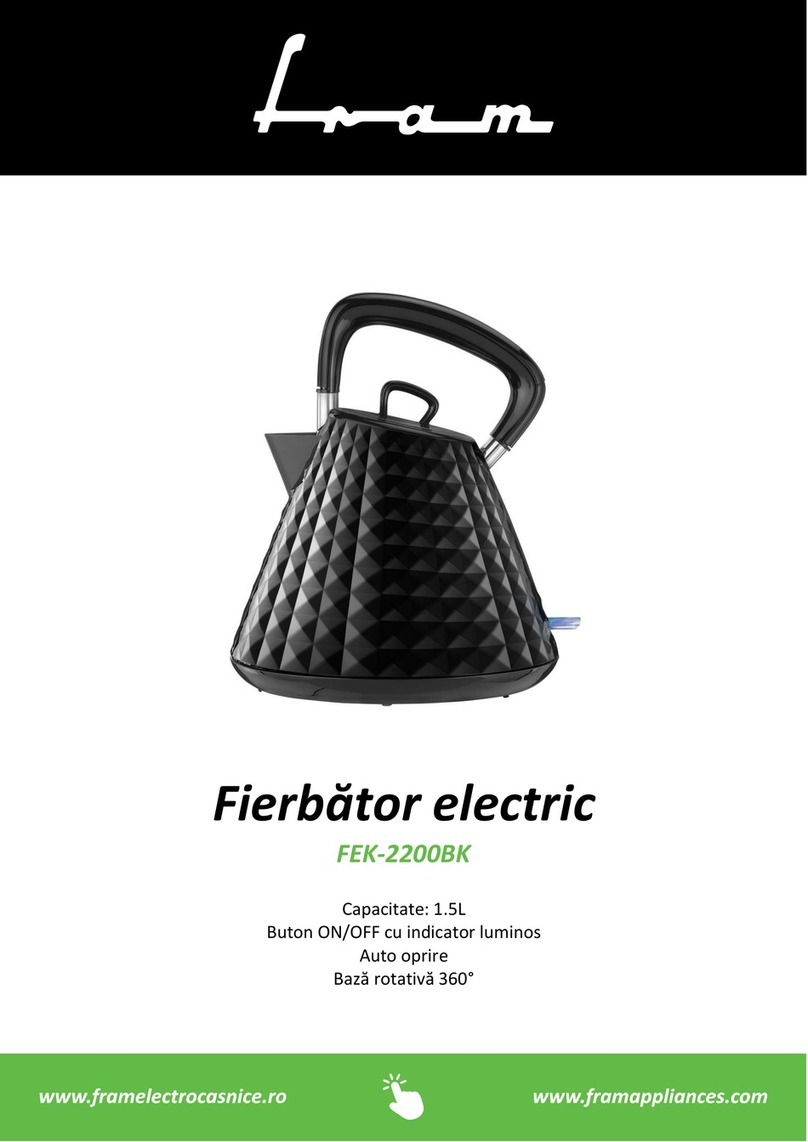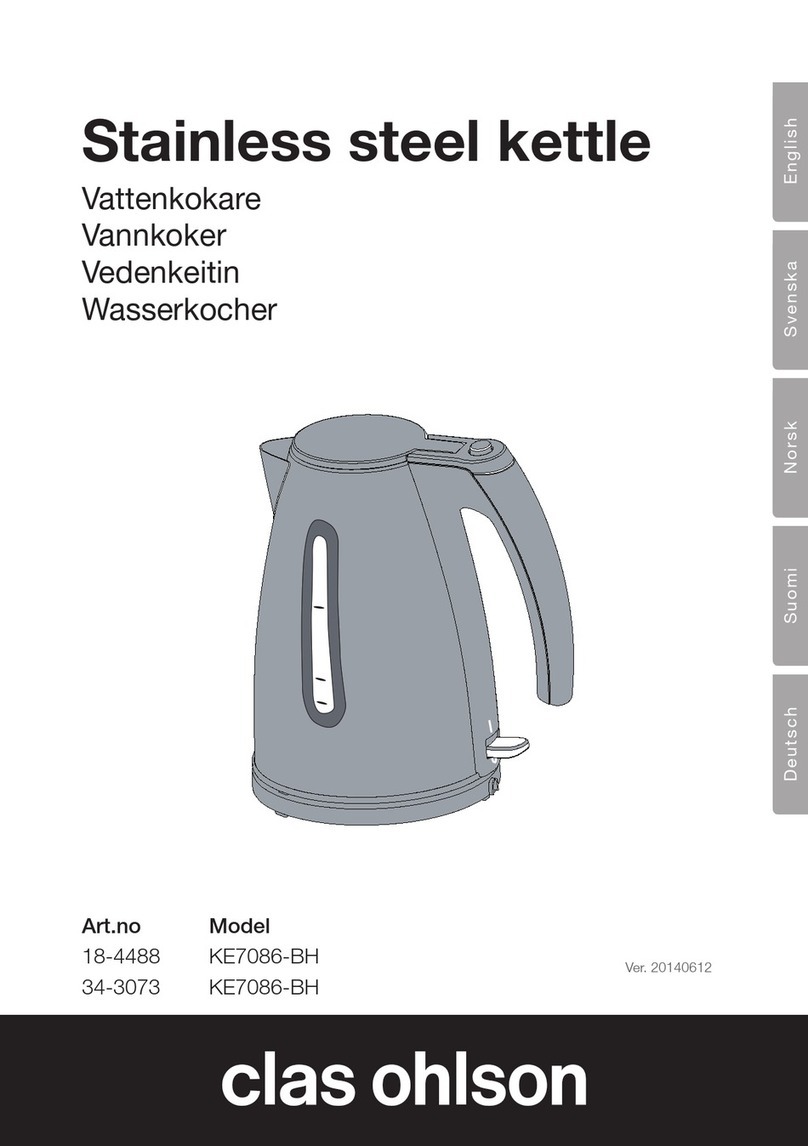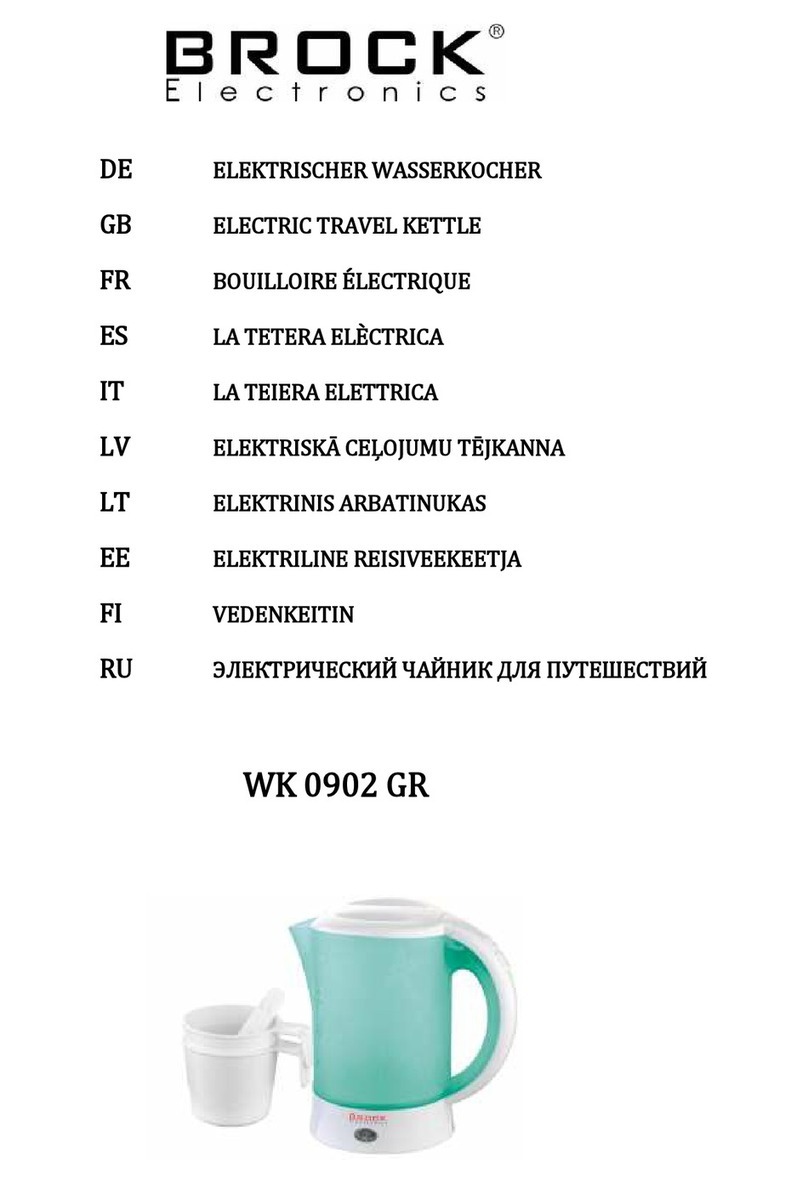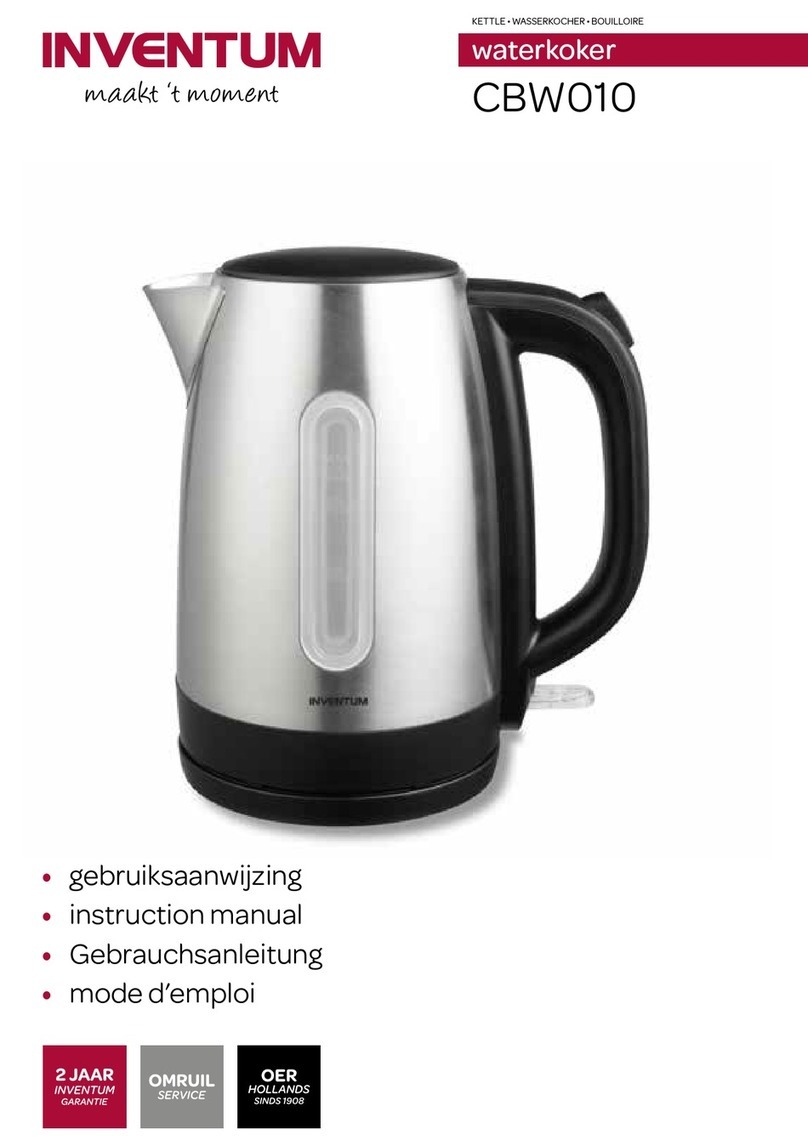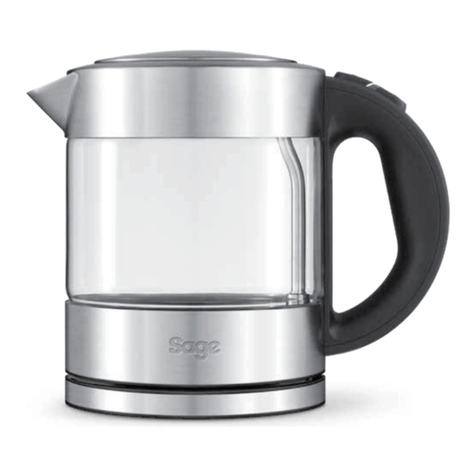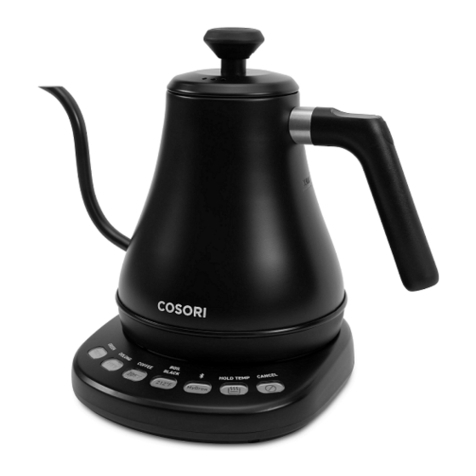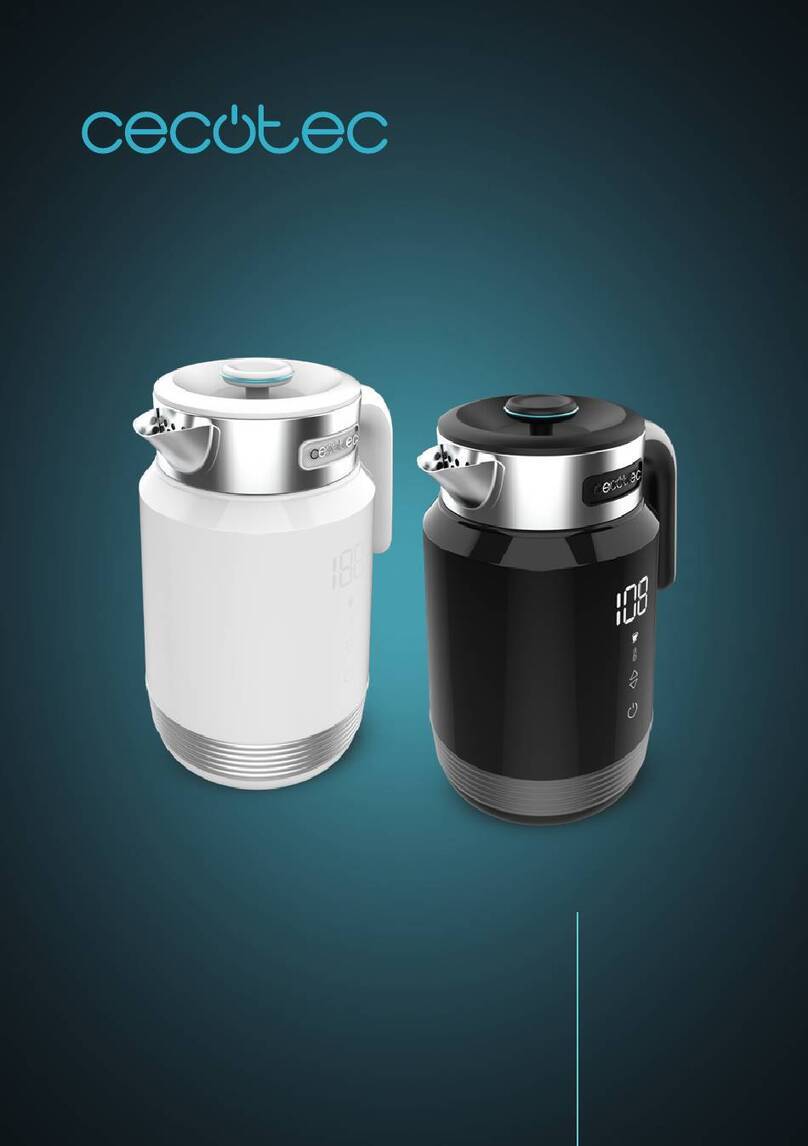
OM-TDB/TDBC-CE 9
Operation
CE units have three lights on the Control Panel. The POWER (green) indicator light
comes on when the the unit is turned on. It indicates that power is being supplied
to the unit. The HEAT (amber) indicator light comes on when heating elements are
heating the kettle. The LOW WATER (red) indicator light will come on when the water
level in the jacket falls below acceptable operating levels. Refer to “Jacket Filling and
Water Treatment” on Page 13.
TO START KETTLE
1. EVERY DAY make sure that the jacket water level is above the mid-point of the
round sight glass. If the level is low, service is necessary.
2. Check the pressure gauge. If the gauge does not show 20 to 30 inches of
vacuum (i.e., a reading of 20 to 30 below 0) or a reading of -0.7 to -1.0 Bar, see
“Jacket Vacuum” on page 12.
3. Turn on the electrical power to the unit by switching the power switch to the ON
position.
4. Turn the thermostat dial to the desired setting. The HEAT indicator light indicates
that the kettle is heating, and cycling of the light on and off indicates that the
kettle is being held at the set temperature. Once in each cycle the contactors in
the support housing will make a clicking sound. This is normal.
TO TRANSFER PRODUCT OR EMPTY KETTLE
The kettle is designed and manufactured to be tilted in a controlled manner. On those
units equipped with a tilt handle, grasp the insulated plastic ball firmly. Maintain a firm grip
on handle when tilting, while keeping kettle body in a tilted position and when SLOWLY
returning the kettle body to an upright position. On those equipped with crank tilt, turn the
handle. The kettle will remain in the position to which tilted until cranked again.
COMMON ACCESSORIES
1. Lift Off Cover
As with stock pot cooking, an optional lift off cover can speed up the heating of
water and food products. A cover helps retain heat in the cooking vessel and
reduces the amount of heat and humidity released into the kitchen. Use of a
cover can reduce some product cook times and help maintain the temperature,
color and texture of products being held or simmered for extended periods.
Make sure the handle is secure on the lift off cover before using. ALWAYS use
the handle to place or remove cover from the kettle. Wear protective oven mitts
and a protective apron. When putting the cover on the kettle, position it on top of
kettle rim, with its flat edge facing the pouring lip.
When removing cover:
a. Firmly grasp the handle.
b. Lift rear edge (farthest from operator) 1-2” (3-5 cm) to allow any steam
and water vapor to escape the cooking vessel. Wait 2-3 seconds.
c. Tilt cover to 45-60° angle and allow any hot condensate or product to roll
off cover back into kettle.
d. Remove cover, ensuring that any remaining hot condensate or product
does not drip on operator, floor or work surfaces.
e. Place cover on safe, flat, sanitary, out-of-the way surface, or return to
kettle rim.
WARNING
AVOID ALL DIRECT CONTACT WITH HOT
SURFACES. DIRECT SKIN CONTACT
COULD RESULT IN SEVERE BURNS.
AVOID ALL DIRECT CONTACT WITH HOT
FOOD OR WATER IN THE KETTLE. DIRECT
CONTACT COULD RESULT IN SEVERE BURNS.
TAKE SPECIAL CARE TO AVOID CONTACT
WITH HOT KETTLE BODY OR HOT
PRODUCT, WHEN ADDING INGREDIENTS,
STIRRING OR TRANSFERRING PRODUCT
TO ANOTHER CONTAINER.
On TDB and TDBC units, the jacket water level is
shown in a sight glass on the kettle body.
Lift the rear edge of the
cover first.


